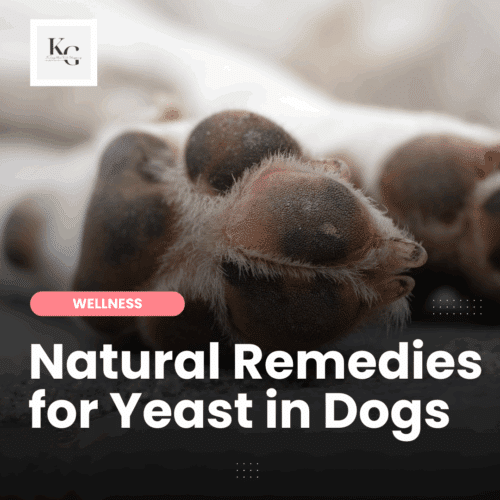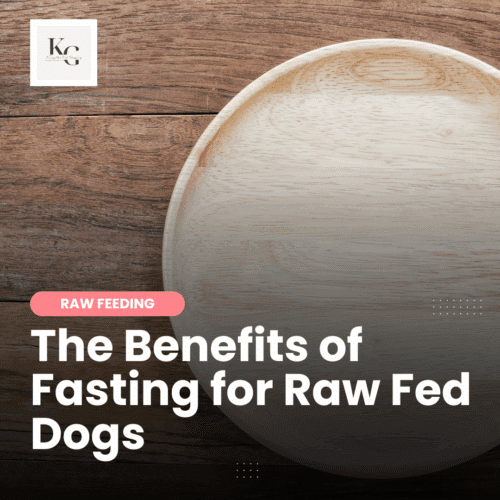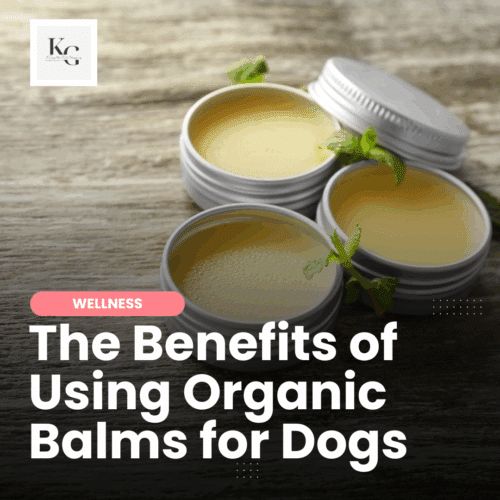Keep the Tail Wagging is supported by pet parents. I occasionally earn a commission (at no additional cost to you) when you click through an affiliate link to one of my favorite products. Thank you for your support. Read More
Traditionally, we're taught to feed our dogs twice daily – once in the morning and once in the evening. But what if you learned that feeding once a day was better? Or what if you test different feeding routines to find what works best for your dog? I played around and Light to Heavy Feeding for my dogs, and this article shares how I got there.
Feeding Dogs Once Daily
According to a new study by researchers at the University of Arizona, feeding your dog once daily may reduce the likelihood of age-related conditions, including dental, gastrointestinal, orthopedic, and liver disorders. The study evaluated over 24,000 pet dogs across nine health categories and found that the dogs benefited from less frequent feeding. In fact, researchers discovered that dogs fed once daily were less likely to develop liver, pancreas, and urinary illnesses. Additionally, higher cognitive scores were found in dogs fed less frequently. Though further research is needed before recommending changes to feeding regimes. Overall, this study provides important insight into the link between feeding frequency and canine health.
While this may be groundbreaking to many pet parents, raw feeders are familiar with the benefits of feeding dogs once daily.
Benefits of Feeding Dogs Once Daily
1 – Feeding once daily simulates a dog's natural feeding regimen; wild dogs aren't eating two or three times daily with snacks in between. Instead, they eat when they capture their food, with time between hunts when they forage and fast.
2 – Feeding once daily allows for a 23-hour fasting period, giving the gut a rest, allowing for proper digestion, boosting the immune system, and keeping disease at bay.
3 – Research suggests that intermittent fasting for dogs may offer various health benefits, including promoting healthy weight loss, enhanced insulin sensitivity, reduced inflammation, and even increased life expectancy.
During the fasting period, a dog's system takes that time to “repair liver, gut and pancreatic tissue.” Source: Dr. Nick Thompson
Choosing Light to Heavy Feeding
While I understand the benefits of feeding once daily, I don't think it's right for my dogs.
Hunger Pukes
My initial concern was hunger pukes. This condition is where stomach acid builds in the gut in anticipation of a meal. A dog may vomit bile (yellow liquid) when the meal is running late. Hunger pukes can be avoided by feeding randomly instead of at a set time daily. However, with my work schedule, I wasn't sure if I could commit to random feeding.
One Meal is Too Heavy
My second concern was the amount of food I'd be feeding. While my other dogs will dive in with glee, Rodrigo has trouble eating meals that are too large and will walk away after eating half the meal (sometimes less). This means that he's eating 50% less than he should, and, at his age, I need him to consume all his calories each day.
Intermittent Fasting
With these two concerns in mind, I took inspiration from intermittent fasting, a method of eating that focuses on when we eat instead of what we eat. The primary goal of intermittent fasting is to promote weight loss and improve health by restricting the number of calories consumed and allowing our bodies to focus on recovering instead of digesting food. And intermittent fasting works for dogs as well.
According to Feeding Dogs by Dr. Conor Brady, digesting food takes a lot of energy as “[a]ll spare resources are directed to the gut to get the meal digested and absorbed. It's thought that if you don't eat for a prolonged period, the body will have more energy available to do other things such as repair, toxin removal, and regeneration.” (page 495)
Both feeding once daily and intermittent fasting enable us to incorporate fasting into a dog's feeding schedule. So, I began feeding my dogs between 9 am and 5 pm, an eight-hour period allowing a daily 16 to 18-hour fast. I've fed my dogs this way for years, but I began to wonder if I could offer more benefits by feeding a light, higher-fat morning meal and a heavier evening meal.
Light to Heavy Feeding
My dogs' original feeding schedule was as follows:
- eat between 9 am – 5 pm daily
- Tuesdays: only raw goat's milk/kefir (a.m./p.m.) and a pasture-raised chicken egg (a.m.)
- Thursdays: the first meal is between 2 pm – 3 pm, with a Real Dog Box chew a few hours later
Light Meal in the Morning – 9 a.m.
We're told that breakfast is the most important meal of the day, but no one said that it has to be a meal fit for a lumberjack. Large meals lead to sluggishness and lack of focus. Therefore, I decided to adjust the above schedule to feed a light meal that was higher in fat in the morning. The higher-fat meal provides the energy source for the day.
According to the Whole Dog Journal, “(f)ats are an excellent source of dietary energy; fats yield 2.5 times as much energy as proteins or dietary soluble carbohydrates for dogs.” And 90-95% of fats our dogs consume are metabolized (utilized for energy).
Fats that I feed to my dogs…
- raw goat's milk or kefir
- pasture-raised butter
- pasture-raised chicken eggs
- Solutions Pet Products, which is higher in fat than other brands
I feed my dogs a small amount of Solutions Pet Products daily with raw goat's milk, kefir, or bone broth. Because Solutions Pet Products is more nutrient dense and higher in fat, a light meal of this food still carries a nutritional wallop.
Raw Meaty Bones
I alternate the high-fat meals with raw meaty bones that are popular with my dogs and easy for me to source:
- duck necks
- whole quail
- cut up chicken with skin
- cut up duck with skin
You can find videos on YouTube showing how to cut up chicken and duck effectively, or you can request this at your local Asian market, which is where I initially found cut-up chicken.
Heavier Meal in the Evening – 3 p.m.
Their evening meals are slightly larger than normal (by a few ounces), depending on the morning meal. By feeding the heavier meal in the evening, my dogs can rest peacefully at night while their body focuses on digestion for approximately eight hours. The body can then focus on detox and restoration for 18 hours until the next meal at 9 a.m.
Glycogen and Muscle Repair
Glycogen, the main fuel source for our cells, is stored in the liver and muscles until the body needs glucose for a quick energy boost. Dogs hold on to limited amounts of glycogen, and what remains unused can be converted to fat to replace any fat burned during exercise. Feeding my dogs a heavier meal in the evening replenishes their glycogen stores while they rest, reducing the risk of muscle weakness and fatigue during the day.
Is Light to Heavy Feeding Nutritionally Complete?
I'm still meeting my dogs' nutritional needs as I balance over time. I believe raw goat's milk and kefir are highly nutritious meals, especially when combined with Solutions Pet Food.
Observations After Feeding Change
The things that I've witnessed can be a coincidence; I have no way of knowing if this is truly due to the diet as I didn't feed one dog regularly as a control. However, I believe that changing how I feed my dogs has improved mobility, inflammation, nutrient absorption, energy levels, and focus.
Week One of Light to Heavy Feeding
Rodrigo (13 y) experienced improved mobility and focus. He also experienced decreased anxiety. And his stool was smaller. In 2019, Rodrigo was diagnosed with EPI (exocrine pancreatic insufficiency); his pancreas no longer produces digestive enzymes, requiring supplementation for each meal. Because of the EPI, I'm always monitoring his stool, and it's usually larger than our other raw fed dogs. The decrease in size leads me to believe that his system absorbs more nutrients with Light to Heavy feeding.
Week Two of Light to Heavy Feeding
Bella (10 m) began to settle down easier in the evening. She used to like to run around in the yard, barking at The Night. Long walks helped to calm the excess energy, but I was wary about her increased endurance with all the walks. The new feeding regimen has been a game changer. I began to notice that the dogs have better focus, and it's easier to communicate with them.
Apollo and Bella still enjoy two walks daily (Rodrigo and Zoey have one walk daily), and we can enjoy our rest days, when we play games and explore the property, without Bella bouncing off the walls.
Week Three of Light to Heavy Feeding
Zoey (10 y) trimmed down; she's a boxy girl, but the excess fat covering her ribs has decreased, and she's more active. Rodrigo began playing with Bella for the first time. And the dogs' allergy symptoms (green eye boogers, paw licking) decreased significantly.
Science Behind Light to Heavy Eating
I found no scientific information about Light to Heavy Feeding/Eating. There is plenty of information about feeding once daily and intermittent fasting. And there is information about working dogs (my dogs are pets, not working dogs).
This will be a journey for me, but I think that to avoid hunger pukes and ensure my geriatric dog is eating enough calories, I stumbled upon a feeding model that works for my dogs. I'm not suggesting that everyone should feed Light to Heavy Feeding. Every dog is unique, and what works for my dogs may not work for other dogs.
- Fat, Protein and Carb Levels in Dog Food, Whole Dog Journal
- Everything You Need to Know About Fasting in Dogs, by Dr. Conor Brady
- Hunger, Fasting, and Once a Day Feeding, Dr. Nick Thompson
- Feeding Working Dogs, Nick Cave, BVSc, MVSc, PhD, DACVN
- Energy and the Canine Athlete, Farm Diggity
I want to thank Holly Barker for helping me understand Light to Heavy Feeding better. Holly specializes in sport dog nutrition.







I think it’s based on the individual. I eat breakfast around 11 am and it gives me the fuel I need to get through my afternoon. For one of my dogs, breakfast is important because, without it, he gets hunger pukes.
The idea that breakfast is the most important part of the day is actually a cereal slogan and has no basis in fact. It’s funny that it’s thought to be true.
My adopted dog is a TVT survivor. She has undergone chemotherapy before and has issues with regular bowels. I would love to try some of your tips– raw feeding and intermittent fasting. Thanks for all the tips! Very informative.